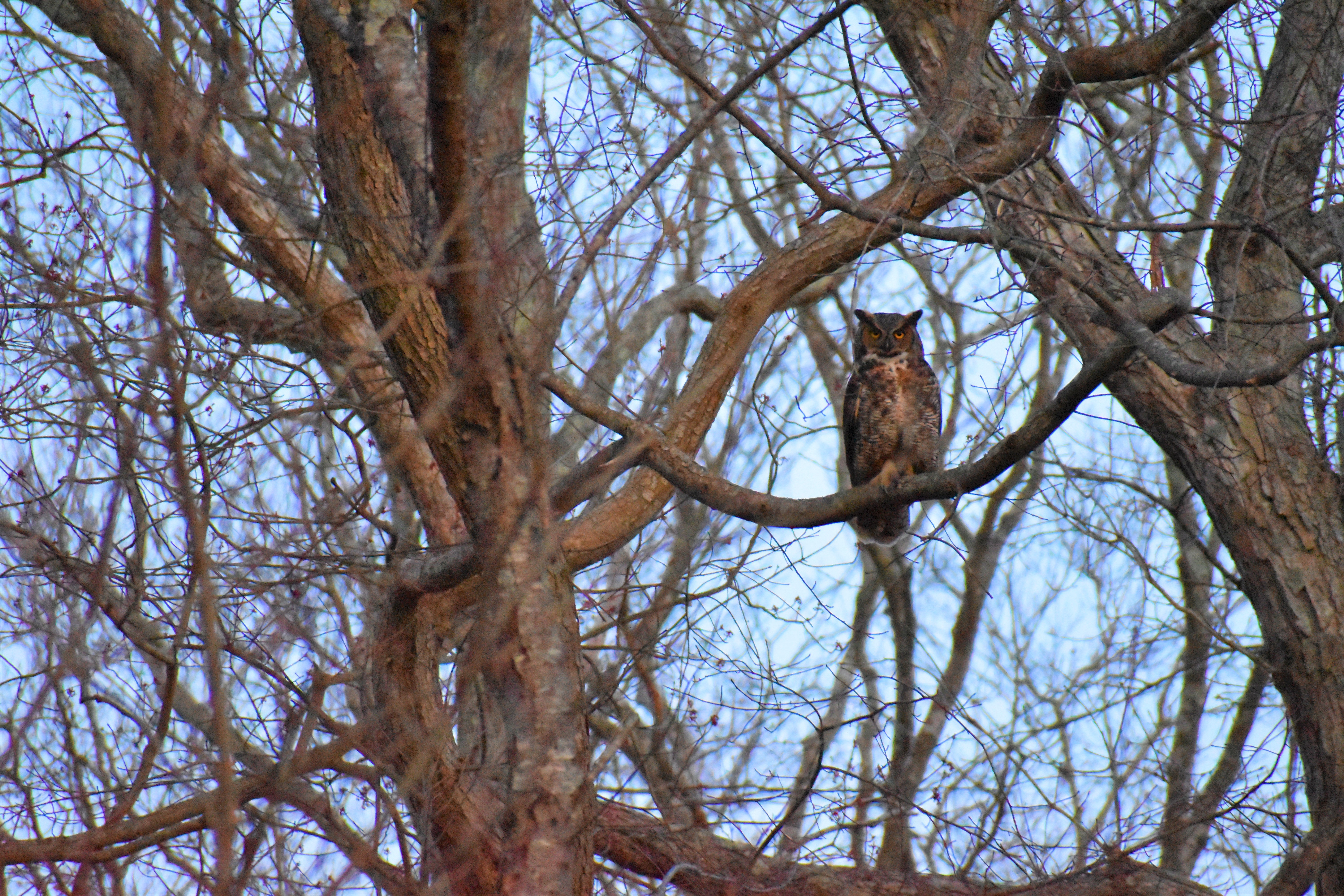
Audrey Royer
Published December 7, 2021
Sacred Oneness With Nature
Guest Post | By Sheila Dobbyn of Thrive Outside
There are twelve of us standing in the dark, in the woods, listening hard.
Our eyes and necks move silently as we scan what we can see of the trees. Together, adults and children, we wait for the answer to the question we have called out into the forest: who’s there?
There is power in a group of humans sharing the silence, listening for answers. Night hiking with my son, our friends, and a bunch of strangers on the Audubon’s “Prowl for Owls” is not the only time I have experienced this phenomenon.
I went to a Quaker school, Moses Brown, and every Wednesday morning we would take a break from academics to gather in the Meeting House, where we would sit together in silence. From age 5 to age 17 I basically meditated weekly. I had varying degrees of success; sometimes I would be hungry and my stomach would growl, sometimes I would be held captive by unpleasant worries or thoughts, and sometimes I would try to make my peers laugh and get in trouble. But I always had some success. No one told us that we were meditating, but when you sit in silence for 30 or 45 minutes, this is what naturally happens.
Every once in a while we would have an outdoor Quaker meeting, where our large group of silent human beings would turn attention to the sounds, scents, images, and touch of nature and rediscover the truth: that we are nature, and that to see it, to hear it, to be aware of it is to know ourselves.
Standing in the woods now with my son and the others, our group leader plays the call of the Barred Owl from her phone once more. It’s the third time and last time she will play it; anything more would be harassment.
Owl, are you there? What can we learn from you tonight?
Like in Quaker meeting so many years ago, my stomach is hungry and my thoughts are momentarily loud. But oh- the owl responds! Two of them actually! Yes, the Barred Owls are there, sharing the darkness with us, the experience only possible by going deep into the woods and respectfully asking to connect. Had we surrendered to the pull of our comforting couch, television, fireplace or pajamas, to the all consuming cell phone, we would not have experienced this powerful oneness with this unique, extraordinary species.
These moments of deep learning in nature do require a commitment to going off the beaten path, but never fail to deliver wonder and joy. There’s so little time, really, and so many species out there to experience. Support your local Audubon, take your family, your friends, and your students into nature, and remember what it means to Thrive Outside.
Sheila Dobbyn is Thrive Outside's Outdoor Learning Professional Development Consultant. Thrive Outside is dedicated to helping our youth thrive through hands-on, outdoor learning and nature play. View this blog post on Thrive Outside's website.

















